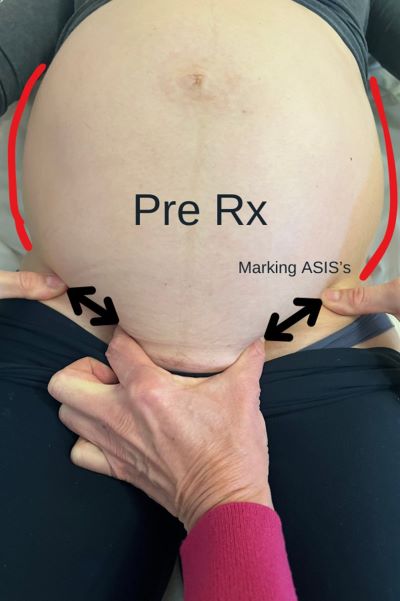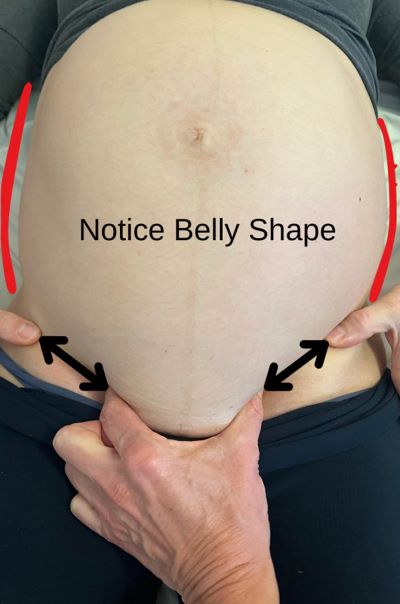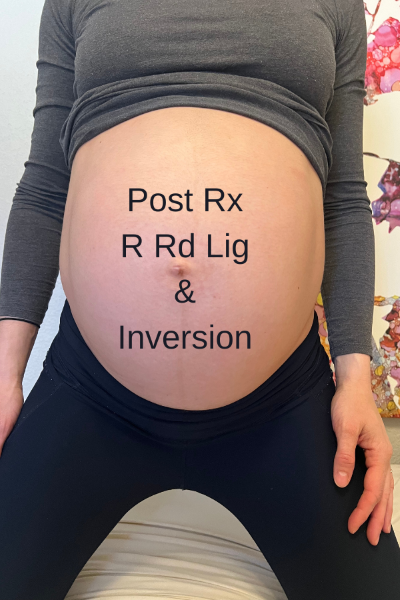Case Study: What We Can Do To Support Pregnant Clients
Through her latest case study, Lynn Schulte discusses the main pieces we can do as pelvic health practitioners and bodyworkers to support our pregnant clients and prepare them for a smooth birth.
Client History: A client came in to see me at 39 weeks pregnant with #2, complaining of shooting pain in her right hip. She said that the pain was so bad that it would take her to her knees. She reported that her first baby was breech, and she had a scheduled cesarean birth. The doctor had a hard time getting the baby out and had to enlarge her incision on the right side. He had to get up on the operating table to remove the baby from her womb. She reported that she could not run more than 2 miles after that birth because of right hip pain. She has not had any prior physical therapy or other treatments prior to this session. She is planning to give birth at a birth center.
Assessment: In assessing this client, I found her baby’s head slightly off to the right. It is hard to tell in the picture below, but the baby’s head is a little bit closer to the right side than the left side.

I didn’t take a picture of the fundus, which was off to the right-hand side compared to the head. The right round ligament was tight. This picture is taken after the release of the right round ligament.

Her femoral head was more anterior on the right as compared to the left. I checked the posterior tissues and found no tightness in the external rotators or glutes on either side. She had some restriction to posterior mobilization on the right-hand side as compared to the left. The scar tissue from the cesarean birth was restricted more on the right side.
Treatment: For treatment, I worked on releasing the tightness in the R-round ligament. After a beautiful release, the fundus stacked right on top of the baby’s head. Doing some release work to the scar tissue helped shift the position and mobility of the right femoral head. We then did an inversion, and her belly shape completely changed to more upright and evenness side to side. You can see in this picture below how the sides of her belly lengthened afterward.

We practiced pushing and she had a very hard time in supine and side-lying in lengthening her pelvic floor muscles. We tried many different times, and she would sometimes get it, but there was a lot of contracting and then letting go and some lengthening. When she got on her hands and knees, she had a beautiful relaxation and lengthening of the muscles, and she noticed how much easier it was for her to do so in this position. After a couple of repetitions of lengthening we then went back to the other two positions and practiced them again, and she was slightly better.
Client Outcome: After treatment, the client reported that she felt much more centered. She said didn’t realize it at the beginning of the session, but she did notice at the end that the baby wasn’t as off to the right-hand side as before. She, also, noticed a huge difference in standing and walking after the session. She told me that she really appreciated the pushing practice and felt in her body how to lengthen and let go of her pelvic floor muscles. We also practiced vocalizations and found that with a louder sound, she was really able to let the pelvic muscles go. I sent a note to her midwives to help them understand what we discovered in this session to help her in her birth.
Conclusion: This case study is an example of how we, as bodyworkers, can support our pregnant clients. Assessing their body, releasing any tightness to create more space and balance for baby and helping them to figure out how to push for labor can all help lead to better birth outcomes. Sharing our findings with our client’s birth team is another way we can support their birth.
Learn how to assess and treat the pregnant body in the Holistic Treatment of the Pregnant Body course. The 2024 group cohort for the online version of this course begins May 6th with registration opening mid-April. Would you prefer to learn in person? You can check out our Live Schedule for a location near you as well.
About the Author: Lynn Schulte is a Pelvic Health Therapist and the founder of the Institute for Birth Healing, a pelvic health continuing education organization that specializes in prenatal and postpartum care. For more information, go to https://instituteforbirthhealing.com

